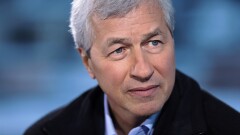The standard practice after bank acquisitions is for senior managers at the sellers to receive lump-sum change-in-control payouts — and then move on. Sometimes they retire; often they resurface at other institutions.
There are certainly exceptions where leaders of acquired banks stay and contribute meaningfully to the new employer's success. Those roles can range from a strategic post overseeing certain business lines and markets to actually becoming the buyer's CEO.
Here are examples of bankers who took on key roles at the companies that bought their banks. Some from past years proved to be big difference makers, and the keepers in more recent deals hope to do the same.
















